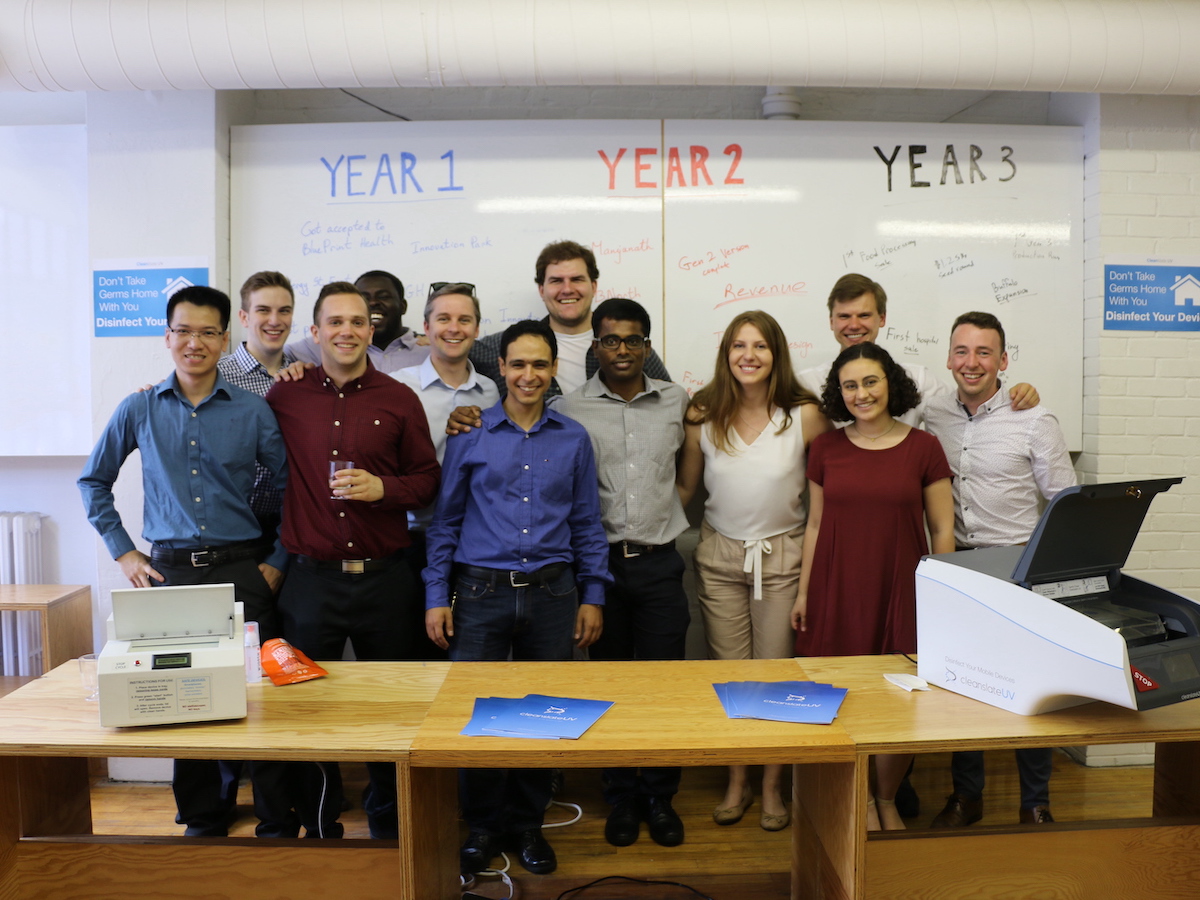Our pathway has been anything but linear
In May of 2014, we were having drinks near campus when our friend Michelle, a 4th year Nursing student who just finished a shift in the Neonatal Intensive Care Unit (or “NICU”), asked what we were working on.I remarked that we had decided to create a device to kill germs on our phones. They are like mobile petri dishes that we carry in our pocket, I explained.
She nodded profusely and proceeded to rant about how often they had to tell parents to put cell phones away. They were banned in the unit but no one listened. For parents who remained at their child’s bedside through an elongated NICU stay, phones were a lifeline to the outside world, and asking parents to give them up was next to impossible.
Still, nurses like Michelle had to remind parents when they could. NICU patients are extremely suspectible to the bacteria and viruses commonly found on mobile phones. And because there was no way to clean the phones, a half-hearted ban was the best the hospital could do.
Three months after that discussion, we had designed our first hospital-grade prototype. We abandoned the consumer market in favour of an industry where we saw a clear path to making a difference.


Seven years later, our company – which we named CleanSlate UV (external link) – is now the global leader in professional mobile device disinfection. We have over 2000 deployments worldwide, and are trusted by over 350 hospitals across Canada and the US. Our technology is used every single day to eliminate pathogens on a range of devices.
Nurses like Michelle, who toil away in the NICU doing incredibly impactful work, do not have to fret about potential contamination from smartphones, smart watches, and other devices.
Of course, our pathway has been anything but linear.
When we first arrived at the Design Fabrication Zone in 2015, we had a Gen 1 prototype (pictured) that was a great proof of concept but nowhere close to market ready. It was made of painted sheet metal so thick, it could protect the President. We had a lot of work to do.
When you have so many items to tackle, figuring out where to start can feel overwhelming. Even lonely.
This is where being part of a community (in our case, the Design Fabrication Zone) can be so helpful. Even if your work is completely unrelated you can push and support each other.
This was certainly the case with our cohort companies, Heliolytics (external link) , whose team gave us a sort of extended emotional support. At that phase – before anyone has bought anything; before you have your tech working – community support is critical.
More importantly, the Zone gave us a sandbox in which we could rapidly experiment. This was a feature of the startup experience I did not fully understand or appreciate until years later. The ability to take a hypothesis, create a minimum-viable version of that idea, and then have customers kick the crap out of it so you can learn.
When you have so many items to tackle, figuring out where to start can feel overwhelming.
In software development, this is a natural part of the sprint lifecycle. For hardware companies, this can be very difficult. Providing the tools and workspace required is very important.Of course, once you actually create the product, you then have to go and get feedback on it. You have to find people – in our case, extremely busy physicians and infection control managers, which we gained access to from our time at the Biomedical Zone – to give you 30 mins so they can tell you about all the things you’ve gotten wrong.
This is where we truly came to appreciate something we’d heard in the early days of our incubator program: that ideas are easy; execution is hard.
Making any step of the execution easier – derisking it in any way – is so helpful at the early stages. That’s part of what the Design Fabrication Zone and later the Biomedical Zone were able to do for us. And for that, among other things, we have lots to be thankful for.